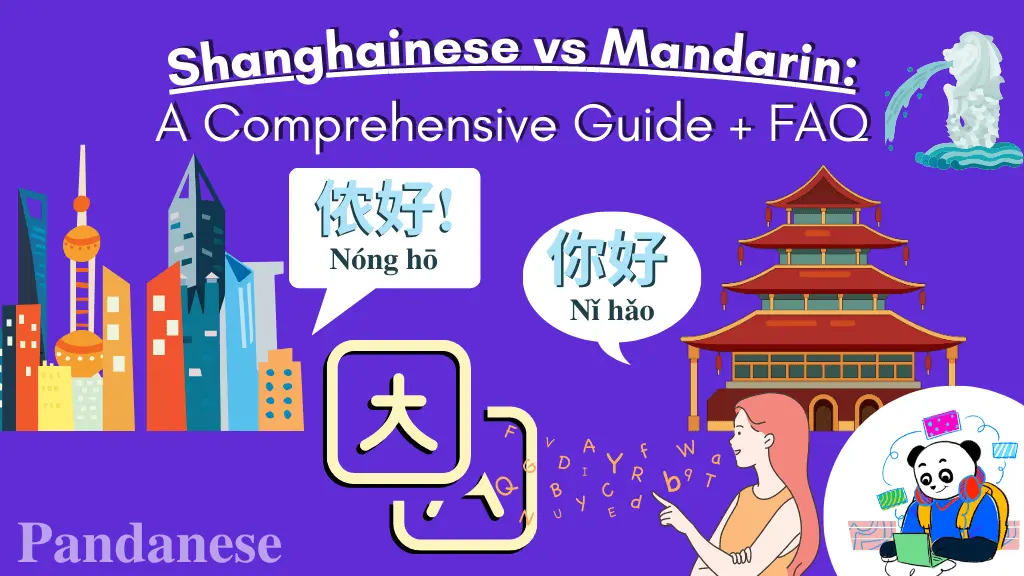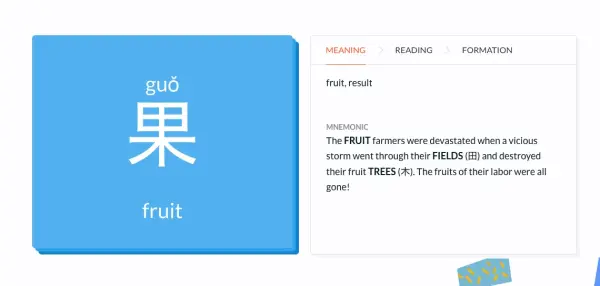
Shanghainese vs Mandarin: A Comprehensive Guide + FAQ
Mandarin Chinese, or Standard Chinese, is the official language of China. However, it's not the only language. Chinese locals are speaking. There are other regional languages, like Cantonese, and dialects, like the Beijing dialects, that are spoken throughout China.
In Shanghai, the locals use Mandarin Chinese and its provincial dialect, Shanghainese. Though the Shanghai language shares many similarities to Mandarin Chinese, it still has a lot of differences in pronunciation, tones, and vocabulary.
So, read on to discover more!
What is Shanghainese?
Shanghainese 上海话 (Shànghǎi huà), or Shanghai dialect, is a wu dialect, meaning it belongs to the wu Chinese languages group, the third most spoken Chinese language after Mandarin and Cantonese. Compared to other northern Wu dialects, Shanghainese is surely the most popular, with nearly 14 million speakers.
Shanghainese was the common language in the Yangtze River Delta region (East China). Still, its popularity has declined in recent decades compared to Mandarin, the official language of China and the main language used by most Shanghai people today.

Shanghai at night, Henry Chen
One of the reasons for this is the Chinese government's efforts to spread a national language, putonghua or Mandarin. As a result, young people in Shanghai now tend to speak Mandarin or a variety that is more and more similar to standard Mandarin Chinese.
Shanghainese is a dialect of Wu Chinese that originated in the Taihu Wu dialects spoken in the region around Suzhou. As Shanghai grew, a distinct variety of Wu dialects developed and became known as Shanghainese. You can find out more about Shanghainese below.

More information about Shanghainese here
Is Shanghainese hard to learn?
Learning Shanghainese can be difficult compared to Mandarin, especially because there are few textbooks available and few resources in general.
If you want to learn Shanghainese, the best thing you could do is move to Shanghai and meet people there or find an online teacher on apps like Tandem.
Another useful resource is YouTube, where you can find videos introducing you to Shanghainese, like the one below.
An introduction to Shanghainese, Language BoostIf you are looking for a deeper understanding, however, I would suggest you find a private native speaker that can teach you.
I would say you should have a solid grasp of Mandarin Chinese, so the learning process is easier for you, as this will help you understand the grammar and sentence structure of Shanghainese. The writing system is the same: it is based on Chinese characters. You can use the web app Pandanese to learn Chinese characters quickly and easily.

Pandanese learn flashcard
If you're planning on moving to Shanghai and wondering whether learning Shanghainese is necessary, it's optional.
Shanghai people now perfectly understand and speak Mandarin. However, you can impress your local friends by knowing a few words!
You can learn more phrases and Shanghainese slang with the video below:
Shanghainese slang, Off the Great Wall
Is Shanghainese the same as Mandarin?
Though Shanghainese and Mandarin Chinese are written similarly (they both use simplified Chinese characters or 汉字 hanzi) and share overlapping vocabulary and grammar points, Shanghainese has its pronunciation, tones, and wording.
Let's have a look at how they're different from each other.
1. Shanghainese vs Mandarin: pronunciation
Shanghainese is rich in vowels (e, ae, oe, a, ei, eu, i, ü, u, o, ou, ao) and consonants (b, d, g, p, t, k, ph, th, kh). What's more special? This dialect uses many unique consonants, like “ng” (heavier n) and “gh” (heavier vowel), which Mandarin does not have.
Like other Wu dialects, Shanghainese features voiced initials and affricates (a consonant that starts as a stop and ends as a fricative) that Mandarin does not have. For example, the word 奇 (strange) is pronounced as “jí” in Shanghainese but “qí” in Mandarin.
2. Shanghainese vs Mandarin: tones
Shanghainese speakers also have a different type of tone system when compared to Mandarin speakers.
The Shanghainese tonal system shares more similarities with the Japanese pitch-accent system with two-level tonal contrasts—high and low, unlike Mandarin with its distinctive contour tones (5 tones with each tone having a different internal pattern of rising and falling pitch.)
For example, 牌 pái (card) is pronounced as “pài” when it comes after the character 红 hóng (red). It is because the character 红 hóng (red) has a high tone, making the second syllable a low tone regardless of its character.
In contrast, the pronunciation of 牌 pái will not be changed if it comes after绿 lù (green). The explanation is that a low-tone character like 绿 lù (green) will make the following character a high-tone word, no matter its character.
3. Shanghainese vs Mandarin: vocabulary
For those who wonder what the biggest difference between Shanghainese and Mandarin Chinese is, we have the answer: vocabulary. The difference in the vocabulary is the major distinction between Shànghǎihuà and Standard Chinese.
Though there's a vocabulary overlap between Shanghainese and Mandarin Chinese, Shanghainese only shares 29% lexical similarity with Mandarin. The other 71% of the words are different, including many basic, everyday words. Without any knowledge of Shanghainese vocabulary, outsiders will not be able to communicate with Shanghai people specifically and people who speak the Wu language generally.
This table illustrates some differences between Shanghainese and Mandarin Chinese. Check it out!
Shanghainese |
Mandarin Chinese |
English |
吾 (wú) |
我 (wǒ) |
I |
侬 (nóng) |
你 (nǐ) |
You (singular) |
伊 (yī) |
他/她/它 (tā) |
he/she/it |
阿拉 (ā lā) |
我们 (wǒmen) |
We |
㑚 (nuó) |
你们 (nǐmen) |
You (plural) |
伊拉 (yī lā) |
他们 (tāmen) |
They |
侬好! (nóng hō) |
你好!(nǐhǎo!) |
Hello! |
早晨好!(zō lǎng hō) |
Good morning! |
|
晚安!(wō ä) |
晚安! (wǎn’ān) |
Goof night! |
再喂!(zā wēi) |
再见! (zàijiàn) |
Goodbye! |
谢谢!(yáyà) |
Thank you! |
|
用客气!(yōng kē qì) |
不客气!(bùkèqi) |
You're welcome. |
对弗起 (dēi fé qì) |
对不起 (duìbuqǐ) |
Excuse me… |
吾叫 (wú jiō) |
我叫 (wǒ jiào) |
My name is… |
吾从 (wú zóng) |
我来自 (wǒ lái zì) |
I’m from… |
零 (líng) |
零 (líng) |
Zero |
一 (yē) |
一 (yī) |
One |
俩 (liáng) |
二 (èr) |
Two |
三 (sā) |
三 (sān) |
Three |
四 (sì) |
四 (sì) |
Four |
五 (ng) |
五 (wǔ) |
Five |
六 (ló) |
六 (liù) |
Six |
七 (qīe) |
七 (qī) |
Seven |
八 (be) |
八 (bā) |
Eight |
九 (jiǔ) |
九 (jiǔ) |
Nine |
十 (zé) |
十 (shí) |
Ten |
Frequently asked questions
How different is Shanghainese from Mandarin?
The three main difference between Shanghainese and Mandarin is in their pronunciation, tone, and vocabulary.
The bottom line
Shanghainese is quite different from Mandarin in terms of pronunciation, tone, and vocabulary.
Though this dialect is less popular and useful than standard Mandarin Chinese, learning a little Shanghainese will enable you to make friends with Shanghai locals and win their hearts.
The easiest way to learn Chinese & build vocabulary

